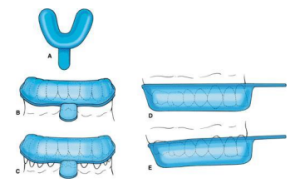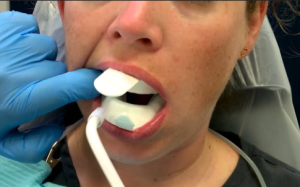Fluoride treatments are an essential part of dental care, helping to strengthen teeth and prevent cavities. One of the most effective methods of applying fluoride is through the use of fluoride trays filled with either fluoride foam or gel. This article will guide you through the process and benefits of using fluoride trays for dental treatments.
Why do Dentists Recommend Fluoride Treatment?
To realize why dentists recommend fluoride, it’s essential to understand the composition of teeth and how decay, better known as cavities, occurs.
Understanding Tooth Decay

- Tooth Structure: Our teeth have a hard outer layer called enamel and a softer layer underneath called dentin.
- Tooth Decay: When we eat sugary foods, bacteria in our mouth produce acids that can attack the enamel, causing it to weaken and form cavities.
- Demineralization and Remineralization: When acids attack, minerals in the enamel are lost (demineralization). However, our saliva can help repair the enamel by depositing minerals back (remineralization).
How Does Fluoride Help?
Fluoride protects our teeth in several important ways:
- Strengthens Enamel: Fluoride helps rebuild (remineralize) weakened enamel, making it stronger and more resistant to acids. It does so by replacing the fluorapatite crystals with hydroxyapatite crystals.
- Reduces Acid Impact: It makes it harder for acids to damage the enamel.
- Fights Bacteria: Fluoride can reduce the ability of bacteria to produce harmful acids.
- Desensitization: It can help reduce tooth sensitivity.
What Are Fluoride Trays?
Fluoride trays are dental devices used to hold fluoride gel or foam against the teeth for a set period, allowing the fluoride to penetrate the enamel. This method ensures that the teeth are adequately exposed to fluoride, which helps in remineralizing the enamel and protecting against decay. They also have the added benefit of being easy for patients to use with minimal discomfort. Fluoride trays can be used to apply one of two fluoride solutions:
- 1.23% acidulated phosphate fluoride (APF) as a gel or foam.
- 2.0% sodium fluoride (NaF) as gel delivered in trays (Neutral pH) or rinses
Steps for Fluoride Tray Application
Selection of Tray Size:

The dental professional will select a tray size that covers all your teeth comfortably without extending too far back into your mouth.
Fluoride Measurement:

They will measure the appropriate amount of fluoride gel or foam (usually 2 ml) to fill the trays without overfilling.
Comfortable Positioning:

You will be seated upright with your chair back supporting you. The dental professional will stand to perform the procedure.
Drying the Teeth:

The dental professional will use an air-water syringe to dry one arch of your teeth before inserting the tray. They will repeat this process for the other arch.
Inserting the Trays:

They will insert the mandibular (lower) tray first, holding it in place while preparing the maxillary (upper) tray. Gravity will help keep the lower tray in place.
To avoid discomfort, the dental professional will rotate the tray slightly to avoid catching the corners of your mouth.
Timing the Application:
The fluoride will be applied for exactly 4 minutes. A timer will be used to ensure the correct duration.
Post-Procedure Instructions:
After the trays are removed, you will be advised not to rinse, eat, drink, brush, floss, or smoke for 30 minutes to allow the fluoride to fully absorb and be effective. Afterwards, you can resume eating or using your teeth as normal.
Conclusion
Fluoride trays are a vital tool in preventive dental care, providing an effective method for applying fluoride to strengthen and protect teeth. By following the proper procedures and guidelines, dental professionals can ensure that patients receive the maximum benefit from fluoride treatments, contributing to better oral health and reduced incidence of dental caries.
Disclaimer
The contents of this website, such as text, graphics, images, and other material are for informational purposes only and are not intended to be substituted for professional medical advice, diagnosis, or treatment. Nothing on this website constitutes the practice of medicine, law or any other regulated profession.
No two mouths are the same, and each oral situation is unique. As such, it isn’t possible to give comprehensive advice or diagnose oral conditions based on articles alone. The best way to ensure you’re getting the best dental care possible is to visit a dentist in person for an examination and consultation.
SAVE TIME AND MONEY AT ANY DENTIST

Less dental work is healthier for you. Learn what you can do to minimize the cost of dental procedures and avoid the dentist altogether!

